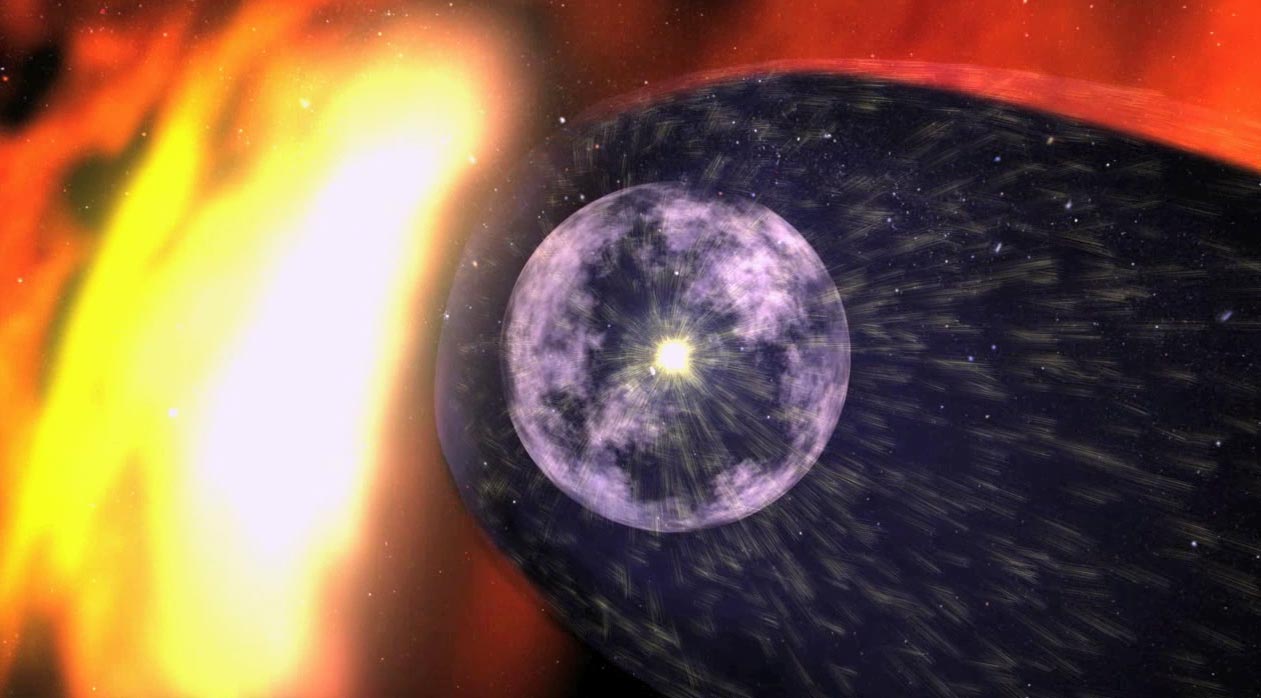This web page is created within BALTICS project funded from the European Union’s Horizon2020 Research and Innovation Programme under grant agreement No.692257.
The activities observed on the Sun,
how they affect the solar system, and the objects in it
The Sun, called the yellow dwarf, is a calm star. Energy is produced in its nucleus that, after many thousands of years, reaches the photosphere, which emits visible light, infrared radiation and ultraviolet radiation.
Occasionally, various activities can be observed on the Sun – sunspots, solar prominences, solar flares, coronal mass ejections, etc. The “conductor” of these events is the solar magnetic field, which is the strongest such type of field in the solar system.
Although it has not yet been possible to find an unambiguous answer to the question of how the solar magnetic field is formed, it is believed that it is caused and influenced by at least three processes. First, the charged particles that make up the Sun move under the influence of temperature. In the same way the charged particles move which are blown away from the Sun, or the solar wind. Third, it should be noted that plasma or charged particles rotate at different depths and locations on the Sun at different speeds. For example, rotation around its axis occurs more slowly in poles, but faster in the equator. All of these conditions interact and help create a very strong and complex magnetic field.
One of the first scientists to watch the Sun and see the spots was Galileo Galilei. In 1849, regular solar observations and spot registration began at the Zurich Observatory. Over a longer period of time, an interesting correlation was observed that the number of spots increases and decreases over a cycle of about 11 years. Since it is now known that the formation of spots is determined by a magnetic field, it can be said that its strength and activity change cyclically.
The solar activity cycle has a maximum when there are many spots and increases the number of both solar flares and eruptions. This usually lasts for several years. After that, the activity subsides and a minimum occurs, which is characterized by a very small number of spots and various manifestations of the activity. Sunspots are the areas where the magnetic field is the strongest. The magnetic field slows down the movement of gases in the convective zone, so the energy from the depths of the Sun is returned, but the cooled gas cannot sink back so quickly. Therefore, the spots on the surface of the Sun look darker than the rest of the surface. They are simply a few thousand degrees colder than the layer of the photosphere.
The sizes of the spots are different and they are arranged in groups, which are mostly formed in two bands above and below the solar equator. At the end of the cycle minimum, spots form further away from the equator, but as the cycle maximum approaches, the spots appear closer and closer to the equator. Above the spot in the photosphere is a line of magnetic field along which plasma or charged particles flow. The longer the spot lasts, the more difficult the magnetic field lines are twisted. Sometimes they “unravel”. These events are observed as flares on the Sun. They are relatively short-lived, but they emit huge amounts of energy and high-energy particles that reach the Earth in a matter of tens of minutes.
Given the speed at which light travels, a flare on Earth can be spotted after 8 minutes, which makes it possible to predict when an impact of high-energy particles is expected, which can ionize the upper layers of the Earth’s atmosphere and cause interference. As these particles heat the upper layers of the Earth’s atmosphere, they expand and provide additional friction to the satellites flying below. This effect can be so strong that over time, the satellite loses altitude and falls to Earth.
Sometimes the flare is accompanied by an eruption of coronal mass, when solar matter is thrown into interplanetary space, which, if the spot is directed towards the Earth, can reach our planet in an average of 48-72 hours or two or three days. Particles emitted from the eruption interact with the Earth’s magnetic field, causing so-called geomagnetic storm. Its visible manifestation is polar lights. In addition to the beautiful effect, geomagnetic storms can interfere with radio communications, weaken and distort the GPS signal, and create electrical currents in the Earth’s crust, which can overload unprotected power lines and cause various damage, as well as corrode metal transmissions such as oil and gas pipelines. Charged particles also affect satellites, causing them to be short-circuited. On the other hand, if a person was on the surface of the Moon when he was touched by particles emitted from the eruption, he would receive a very strong dose of harmful radiation, which is life-threatening. The crew of the space station is not threatened by such danger, because it is located in the Earth’s magnetic field, which diverts dangerous particles, but such events increase the total amount of radiation that a person receives while in space for a long time.
Because the solar wind blows constantly, it can be said that the solar atmosphere surrounds the planets and carries with it the solar magnetic field, creating a protective field around the entire solar system. This is called a heliosphere. As the solar activity is lower, the solar wind and its blown heliosphere also weakens, allowing more cosmic radiation to enter the interplanetary space from distant areas of the universe.






















